
How do you know a bird is a bird? Most people think it’s the wings that make a bird, bats and cockroaches have wings but they’re not birds. Birds are the only vertebrates that can fly. However this does not necessarily mean that all birds can fly. Let’s take a look at the characteristics unique to birds.
Birds of a feather.....
Feathers are composed of beta-Keratin, other protein and light-reflecting pigments. They seem to have evolved from scales. In bird this beta-keratin form of protein is a major component of the feathers, bill and talons. It is light-weight, strong and incredibly flexible and is regenerated throughout a bird’s life. Feathers play an important role in a bird’s life and are adapted mainly for flight, thermoregulation, incubation of eggs, camouflage, mating (in some species), protection from the wind, moisture and sun etc. Feathers may also be ornamental for the purpose of courtship rituals and territorial display. These feathers or plumes are not designed for flight and instead are used for display. A typical wing feather consists of a central, stiff shaft that is hollow at the part closest to the bird’s body and the other end is the area to which the vanes are attached on each side. The leading edge of the feather during flight is called the outer vane. The opposite vane is wider than the outer vane and is referred to as the inner vane.
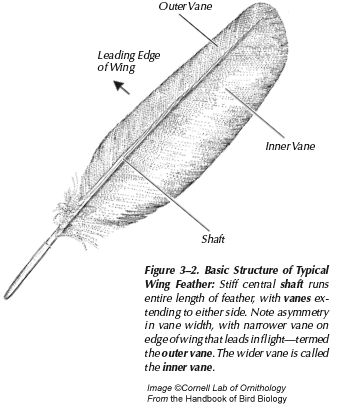
The wind beneath your wings...
Wings are one of the most defining characteristics of birds. Even flightless birds have retained adapted wings that they use for courtship dances, threat displays or swimming. The shape and size of wings varies between species based on how the bird flies, and wing markings are useful to identify bird species. There are four different types of wings and most birds fall into one of these categories. Birds without wings do not exist. The Moa, which is considered extinct since the 16th century, was the only bird that was wingless.
Elliptical or short, rounded wings allow for a high degree of control, great manoeuvrability, fast take-offs and sprinting ability. Thus facilitating tight manoeuvring in confined spaces like densely vegetated areas. They are common in forest raptors and ground-living birds. Examples of birds with this type of wings are the robin, sparrow, dove, woodpeckers, pheasants and the true hawks.
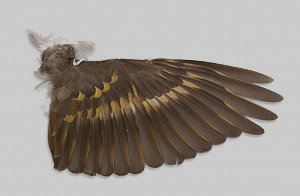

High speed wings have bones that are relatively long, and the wings taper to a point to allow for high flight speed with low drag, and low energy consumption during flight, common to bird species like swifts, swallows, falcons, shorebirds that are built for speed.
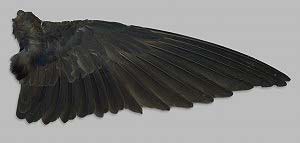

High aspect ratio wings are typical of soaring sea birds such as gulls and albatrosses that specialize in soaring and gliding flight. They are long, narrow wings which are perfect for high-speed gliding in the strong winds and help birds take advantage of short spurts of updrafts. High aspect ratio wings require a long taxi in order to get airborne.
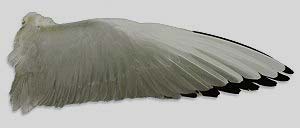

Broad Soaring or Height-lift wings have deep slots at the end of the wings that effectively reduce drag and are perfect for soaring and gliding because they can use warm air updrafts to fly using almost no energy. These wings are broad and relatively long, allowing for take-off and landing in fairly confined areas, high lift, low speed soaring, and slow descents. This wing type is found in birds of larger species like hawks, eagles, vultures, geese and swans.
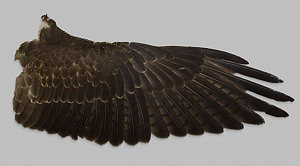

All these Bills...
The reason we have mouths and not beaks is because a ‘peck’ on the cheek would not be a very pleasant feeling. Besides we don’t need to carry food, water, bricks or briefcases in our mouths; we’ve got hands to do that. Birds on the other hand or should we say other ‘wing’ don’t. And hate to break it to you buddy but our favourite bird characters, Donald Duck, Daffy Duck and Tweety who had hands and didn’t really use much of their beaks weren’t real...Shhhh!
All birds have a bony, keratin-covered projection forming their mouth and consist of two mandibles, upper and lower. The upper mandible is typically rigidly attached (although not in all species) to the skull such that it does not move. Only the lower mandible is free moving and hinges against it. The most important function of a bird’s bill is feeding and is frequently evolved for specific bird diet types. Many birds also use their bills as tools for carrying, drilling, preening and other tasks. The bill is one of the characteristics used to identify birds. Most bird-watchers observe the bird’s bill to deduce its diet and learn about bird behaviour.
Birds have different types of bills let’s take a dekko.

Generalist: a fairly large bill in comparison to the head size, with the upper mandible curved and the lower mandible smaller and flatter and is mostly found on birds like jays, magpies and crows – opportunistic gourmands of a wide range of food.
Insect catching: bills are generally pointed and small in size, compared to overall head size, with almost similar sized upper and lower mandibles. Birds with this type of bill are skilled at catching insects in flight or directly from trees, shrubs, plants and even the ground.
Grain or seed eating: bills are characterised by a distinct triangular shape and have strong upper and lower mandibles permitting the bird to break into the shells of grains and seeds. Finches sparrows and Rose-breasted Grosbeak are examples of birds with this beak.
Coniferous-seed eating: Cross-bills are a common example of this type of bill. Here the upper and lower mandibles are usually of the same size with extended tips off-set from each other resulting in each mandible crossing over or under the other. These tips are used to prise seeds from pine cones.
Nectar feeding: Birds that feed on nectar are usually the ones with this type of bill. These bills are long and fine with a moderate downward curve enabling the collection of nectar from the base of the flower. The humming bird is a typical example of birds with this type of bill.
Fruit eating: The fruitiest example of this bill is the Keel-billed Toucan. The bill is very large in relation to head size. Needless to say this beak is found on birds that eat fruit often allowing them to grasp and break through the outer skin to the soft fruit inside and manipulate large pieces of fruit.
Chiselling: They are fairly long and thin, though very strong, and can be struck against tree trunks or branches. They are used for opening up hollows, getting at subsurface bugs and to signal other birds in the area. The most common birds with chiselling bills are the woodpeckers.
Dip netting: Pelicans are the best example of birds with this type of bill. These bills constitute a long, straight upper mandible, often with a small hooked end, and a lower mandible that holds a large fold of skin that can be used like a net to trap fish or shelled-fish in a large gulp of water. The water is drained off and the catch is then swallowed.
Surface skimming: The upper mandible curves part of the way into the length of the lower mandible. The lower mandible is thickened and elongated and is drawn through the water until it encounters the resistance of food when the upper mandible clasps down on the catch trapped in the bill. Birds that fly just above the surface of the water dipping their bills into the water to catch small fish have this type of bill.
Scything: The bill is long, thin and upturned and is matched with a sweeping motion by wading birds in wetlands and mudflats to catch insects and other small creatures in the surface waters or mud.
Probing: This bill is ideal for picking on worms and other small invertebrates present in the mud or soft ground. They are defined by a long, thin downward curving shape. The long-billed curlew is an example in this category.
Filter feeding: These bills tend to have a distinct almost 90 degree downturn to them with a large swollen lower mandible. This allows for the bottom half of the bill to be submerged in water while the top half remains in the air. This bill is effective in filtering out small shell-fish from the water. Flamingos are the birds that boast this type of beak.
Aerial fishing: Pitchers in the air for the Kingfisher who sports this type of long spear like bill. It uses it to catch small fish in a diving flight into the water from above.
Pursuit fishing: A relatively flat, splayed bill that some species of aquatic birds use to chase fish by diving from the surface of a pond, river, lake or sea.
Scavenging: Scavenging birds, as in the case of vultures, are opportunistic birds that feed on the dead carcasses of animals or other birds. Their bills are reasonably large with a pronounced hooked end that helps in tearing flesh from the body. They often have no feathers around the base of the bill or even on the entire head as in some vultures.
Raptorial: It is sharply hooked to hold onto and penetrate prey once caught and then to tear off pieces for easier feeding. Birds of prey such as owls that feed on small mammals or other birds have this type of bill.
All birds lay amniotic eggs. Bird reproduction is the same as mammals. The sperm from the male is transferred to the female when they touch cloaca, this act is commonly known as the cloacal kiss, romantic huh! Thereafter the sperm cell joins the ovum in the oviduct, fertilizing the ovum and forming the nucleus of the egg. This is followed by the formation of the yolk, whites and shell.
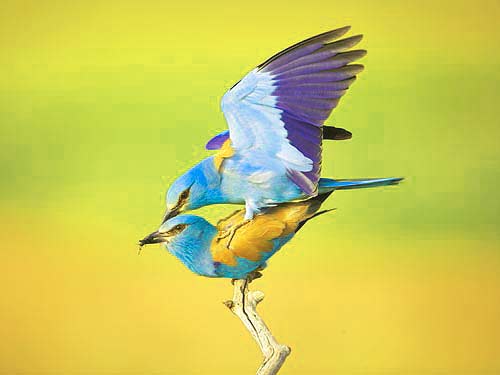
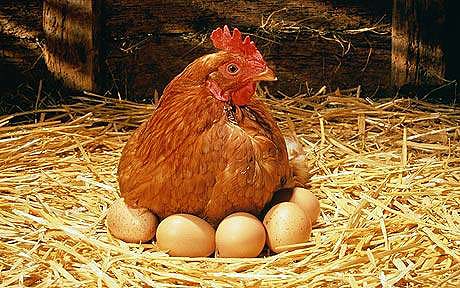
The eggs have a hard shell and require incubation. This is an act of using body heat to keep eggs at maximum possible temperature for healthy development and hatching and hence the egg-sitting. Eggs may be rotated occasionally and parent birds take short snack and loo breaks. Mama hen may do most of the egg-sitting or the chore could be shared with papa hen. This is very specie specific. Egg shape, size and markings, number of eggs laid, necessary incubation time and the condition of the chicks at hatching vary for each bird species.
All birds, like mammals, are endothermic and do not rely solely on the environment to maintain their body temperature. However birds do indulge in a spot of sun-bathing called sunning and it’s not for tanning purposes although it is believed they do it for pure enjoyment and relaxation. Birds sun themselves for warmth which increases their chances of survival in cold weather or when food is scarce. Sunning also helps them convert compounds in their preening oils into vitamin D, essential for good health. Sunning also helps extricate parasites, as the excess heat persuades them to move to other areas on the body more accessible to the bird. The bird is then able to get rid of them while preening.
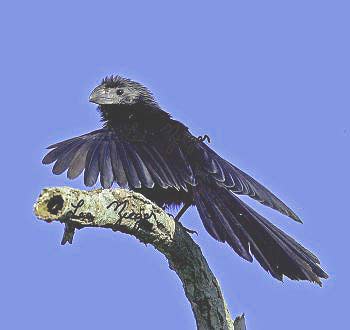
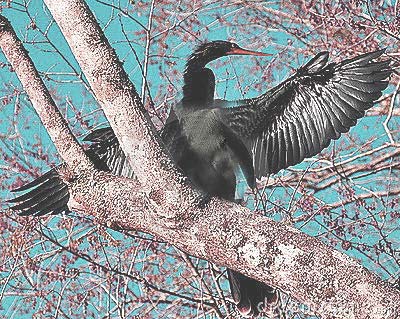
Birds are blessed with a high, efficient metabolism. The digestive system is simple but effective in quickly turning food into usable energy. Food is passed through quickly, extracting maximum possible energy and consequently minimizing the extra weight of undigested food. Here’s the simple process involved before that crow poops on your head and your day gets lucky. The esophagus (narrow tube) carries food to the crop. The crop is a sac-like widening of the digestive tract where food is temporarily stored. Proventriculus - the 1st chamber of the bird stomach where food is broken down by digestive enzymes. Gizzard is the 2nd chamber where food is ground up by muscular actions and small stones or grit swallowed by the bird along with the food. Intestines are the tubes that continue to extract nutrients from the food passed from the gizzard.
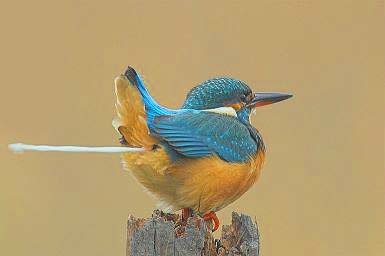
Birds have two legs similar to mammals but very different. A stork, for example, is a wadding bird and has long thin legs that are suitable for moving through deeper water. While an eagle or a vulture has thicker more powerful legs for capturing prey. What does this tell you about bird legs? Different types of birds have evolved and adapted different leg shapes and length to suit their most essential needs. Birds use their legs for perching, walking and running, hopping or griping their prey.
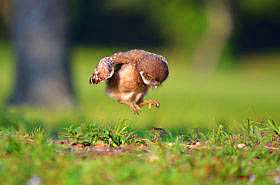
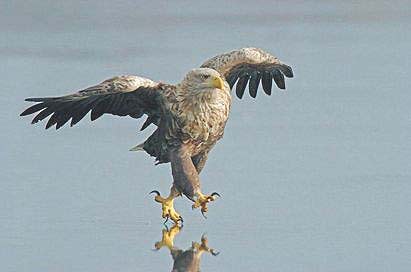
Birds have highly polished communication skills and most of them communicate vocally through elaborate songs and calls. For many species extensive communication is part of territorial defence, courtship behaviour, parent-chick recognition and community cooperation.
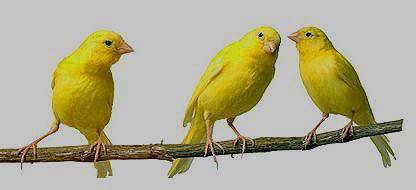
“Why’s that creepy guy ogling us?”
Who needs GPS if you have a pet owl!
Birds have acute navigational skills whether they are migratory or non-migratory birds. For migrating species, those skills allow them to make journeys of hundreds or thousands of miles through highly variable climatic and geographical conditions and yet arrive at the same place year after year. Non-migratory birds use their navigational skills to get to the same food sources and nesting sites without difficulty.
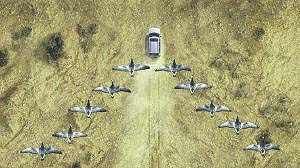
All birds have backbones like other vertebrates. The only difference is the bones in this class of vertebrates are lighter and filled with hollows and air sacs to keep them light weight. Birds also lack teeth and a jaw is absent. The number of hollow bones varies between species. However gliding and soaring birds tend to have the most. Some flightless birds like penguins and ostriches have only solid bones.
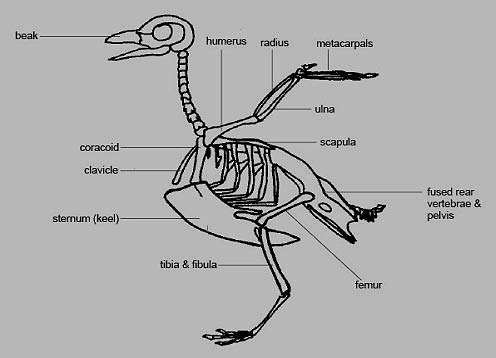
The furcula – a bone unique to birds and the cause of a great deal of tugging at the dinner table, more commonly known as the wish bone. This bone protects the chest cavity during wing beats keeping the birds chest organs safe from excessive pressure.
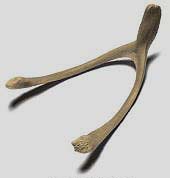
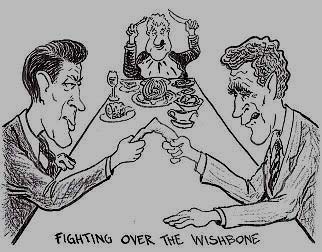
Birds, like all other animals, have their own set of unique survival skills stashed up their wings. These survival instincts help them; yeah you know it, survive! If you’re a bird lover and are about to get a colourful chirpy chatterbox for company, you ought to know that he’s a fast little learner and everything you do, from the time you put the grub in the table, right down to your gentle touch, is going to set the foundation for how he’s going to behave all his life. Like they say, “there’s no such thing as a bad student only a bad teacher.” The process of learning truly begins at birth for our little feathery friends. An example is the Newborn herring gulls, knowing that the red spot on their mother’s bill has a snack in store and they peck at it to be fed. Pecking becomes more precise as time flies and hatchlings learn to anticipate the position of their mother’s bill when she’s back from her hunt. Birds also learn to watch out for predators by observing other birds or decoding their distinctive warning calls. Practice makes perfect and in the case of birds, they become better at building nests as they get older. Some birds form flocks during winter, others stay flocked all year round while some loners prefer to stay single. United we stand, divided we fall – has meaning for the birdies as well. A lone bird is more vulnerable to attack by birds like hawks and owls. This is the area where birds in a flock have the advantage; there are more eyes to locate food and spot predators. A flock will usually attack and drive away a predator, something we call ‘mobbing’. The risk of an attack by a predator for a bird flying solo is much greater than one that is in a flock. However being a member of a flock has its own set of down’s. Birds often establish a hierarchy, or more aptly a ‘pecking order’, of dominance within the flock. This is probably devised by one of the bullies in the flock; the birds of a lower rank submit to pecking by those higher in rank and peck those who are lower in rank than themselves. So can you guess who gets first choice of food, water and mates? That’s right the highest ranking bird! Others just have to wait in line for their turn. However this method is effective in reducing competition and though it may not seem so but the lowest ranking bird’s has it easy – he doesn’t have to fight his way through every member of the flock for every scrap of food that comes along!
Some birds use their coloration as a camouflage and stay still, blending in with their surroundings, when danger is close at hand. Funnily enough, they use the same coloration to sneak up on their prey. Most birds will flee at the drop of a hat (when it perceives danger) but if cornered with absolutely no escape route it will fight back tooth and nail or more fittingly bill and talon! Birds are also very territorial and will maintain and defend their territories to find food, ideal nesting sites and attract mates. The melodic symphony of chirps that begins your day is not because birds love to sing. It is either a call for a mate or a warning to other birds to stay of their territory. And that’s not all, the songs composed serve as a warning of potential dangers, and even show the identity of a bird - it’s species, sex and age like a complete profile - “Hey there! I’m a female mocking bird, 2 years old and I’m perched right here! Where are you?”
G Kowledge of | 0 Comments >>
0 Comments
Leave Comment
Your email address will not be published. Required fields are marked.